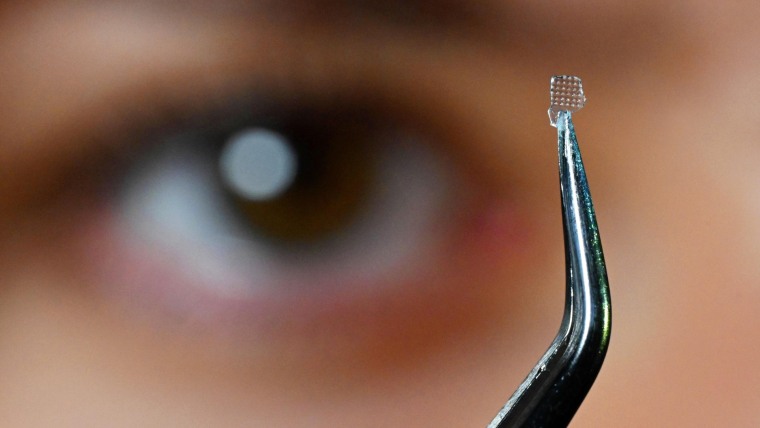
- Light
- Research
Published: | By: Marco Körner
A research team from the University of Jena has developed a small optical lens, only a few millimetres in size, whose refractive behaviour changes in the presence of gas. As reported by the researchers in the journal Nature Communications, this “intelligent” behaviour of the micro-lens is enabled by the hybrid glass material from which it is made. The molecular structure of the lens consists of a three-dimensional lattice with cavities that can accommodate gas molecules, thereby affecting the optical properties of the material.
Multi-responsive Glasses
“With support from the Carl Zeiss Foundation, we are developing so-called multi-responsive materials,” explains Lothar Wondraczek, Professor of Glass Chemistry at the University of Jena. “In the case of the hybrid glass lens, this means that it refracts light more or less strongly depending on whether gas is absorbed in the lens material.” The challenge was to transfer classical glass-forming methods to these special materials.
“The metal-organic frameworks we used here,” Wondraczek continues, “are being researched and developed as materials for gas storage or separation.” Doctoral candidate and lead author of the publication Oksana Smirnova, adds: “However, most of these substances decompose when heated and are therefore very difficult to form.”
Together with Dr Alexander Knebel, junior research group leader at the Chair of Glass Chemistry, the Jena researchers first had to develop a suitable synthesis process for highly pure materials. They then had to identify the optimal conditions under which the material could be shaped. “We melt the material and then transfer it into a 3D-printed mould, where it is pressed. This process allows us to choose almost any desired shape,” the chemist explains. “We deliberately chose the lens as the shape,” she continues, because “even the smallest impurities are noticeable in a lens as they directly affect the optical properties.”
Versatile Formability
This new process now fundamentally allows for a wide variety of shapes and geometries, extending beyond the specific application as micro-lenses, Wondraczek explains. “Because these multi-responsive materials react to multiple influences simultaneously, they could be used for logical circuits, for example,” the materials scientist describes possible applications for such components. “This specifically means that two conditions are linked for the observable reaction,” he explains. “If a light beam hits the lens and gas is absorbed in the lens material simultaneously, then the light is refracted in a particular way, providing combined feedback.”
Membranes for gas separation, whose optical properties change when gas molecules are present, are also conceivable. Such optical components could be used in sensor technology, making measurement methods more efficient, space-saving, and “intelligent.”
Original publication:
Oksana Smirnova, Roman Sajzew, Sarah Jasmin Finkelmeyer, Teymur Asadov, Sayan Chattopadhyay, Torsten Wieduwilt, Aaron Reupert, Martin Presselt, Alexander Knebel & Lothar Wondraczek: „Micro-optical elements from optical-quality ZIF-62 hybrid glasses by hot imprinting”, Nature Communications, 2024 (15) 5079. DOI: 10.1038/s41467-024-49428-1External link